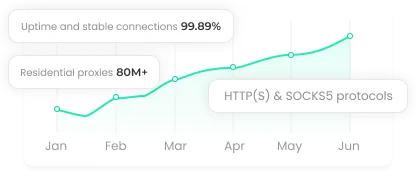Why UDP Matters for Online Gaming and Streaming
Milliseconds can make or break your online experience. One laggy second can ruin a gaming session, freeze a live stream, or scramble a voice call. That’s where UDP – the unsung hero of fast data transfer – comes in. This protocol doesn’t fuss over perfection; it prioritizes speed. And sometimes, speed is everything.

The Overview of UDP
Most people have heard of TCP – the Transmission Control Protocol. TCP is meticulous. It checks, rechecks, and confirms that every single packet of data arrives safely. It's reliable, yes, but slow.
UDP, or User Datagram Protocol, takes a different approach. It sends data out into the world without waiting for acknowledgment. No handshakes. No confirmations. Just send, and keep moving. This connectionless style makes UDP lightning-fast, perfect for situations where a slight loss of data is acceptable but delays are not.
How UDP Data Forwarding Actually Works
Think of a UDP server as a relay runner. It grabs the data from the sender and sprints it straight to the receiver. Unlike TCP, it doesn't pause to check if the baton made it safely.
Here's the process:
Data Transmission: The client sends data to the server. The server immediately forwards it to its destination.
Minimal Delay: Without acknowledgments or retransmissions, latency drops dramatically.
Speed Over Precision: Some data might be lost along the way. In fast-paced applications, that's a trade-off worth taking.
This approach ensures low-latency communication, making it perfect for real-time applications where every millisecond counts.
What Makes UDP-Based Servers Special
Reduced Latency: No handshakes, no waiting. Data moves fast.
High-Speed Communication: Send large bursts of information without the overhead of error checking.
Real-Time Performance: Ideal for gaming, live streaming, and VoIP calls.
Efficiency: Lightweight protocol design makes it great for high-volume data transfers.
Why Certain Applications Rely on UDP
1. Gaming
Competitive online games are unforgiving. A 50ms delay can mean the difference between winning and losing. UDP delivers game data instantly, keeping players in sync.
2. Live Streaming
Services like Twitch and YouTube Live thrive on speed. UDP reduces buffering, ensuring video streams smoothly even when millions of viewers tune in simultaneously.
3. VoIP and Communication
Skype, Zoom, Discord – all rely on UDP to transmit voice with minimal lag. Clear calls. Instant responses. Communication without frustration.
4. Financial Trading
In high-frequency trading, milliseconds translate to money. UDP delivers market updates immediately, giving traders an edge.
The Advantages of Real-Time UDP Forwarding
Faster Data Transmission: No delays from connection checks. Data moves almost instantly.
Smoother User Experience: Gaming, streaming, and calls feel more responsive.
High Throughput: Ideal for sending large volumes of data efficiently.
Optimized for Streaming: Minimal interruptions keep audio, video, and game data flowing seamlessly.
Configuring a UDP Server
Choose a Provider: Look for services that support UDP with configurations tailored to your application.
Configure Your System: Set the correct IP and port to direct traffic through the server.
Test Performance: Verify that data is forwarded quickly and latency is minimal.
Challenges to Keep in Mind
Packet Loss: Some data may not arrive, but real-time apps tolerate minor losses.
No Error Correction: Unlike TCP, UDP doesn't fix corrupted data.
Firewall Limitations: Some networks block UDP traffic, requiring adjustments to allow smooth transmission.
UDP vs. TCP
|
Feature |
TCP |
UDP |
|
Reliability |
Guarantees all data arrives error-free |
Prioritizes speed over accuracy |
|
Latency |
Higher, due to connection checks |
Minimal, perfect for real-time use |
|
Best Use |
File transfers, emails |
Gaming, live streaming, VoIP, trading |
Wrapping It Up
UDP isn't perfect. It sacrifices some accuracy for speed. But in real-time environments where delays are costly, it's indispensable. Gaming, live streaming, VoIP – these are all worlds where milliseconds make the difference. Understanding how UDP works allows you to leverage it, improving performance and creating smoother, faster online experiences.

















































